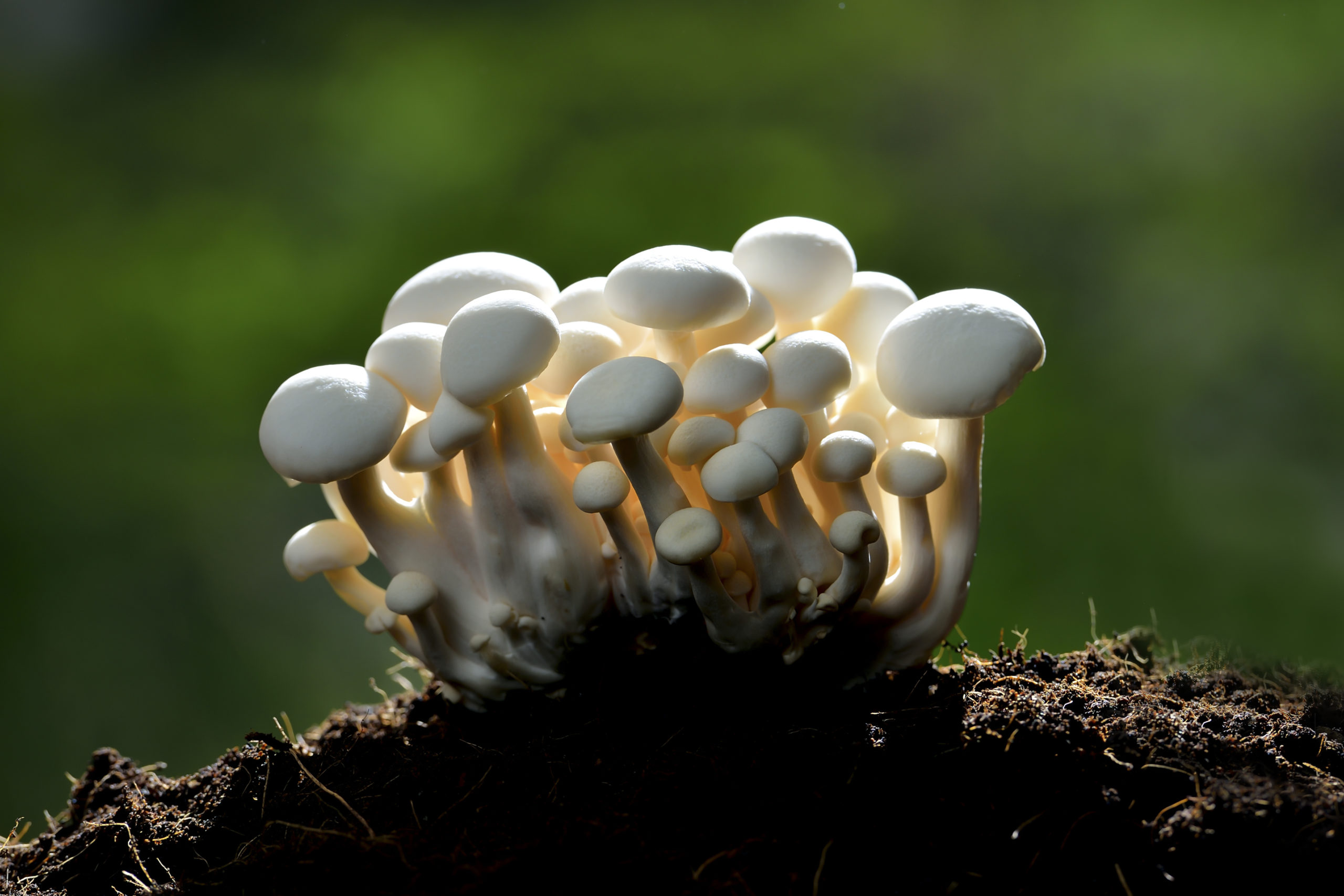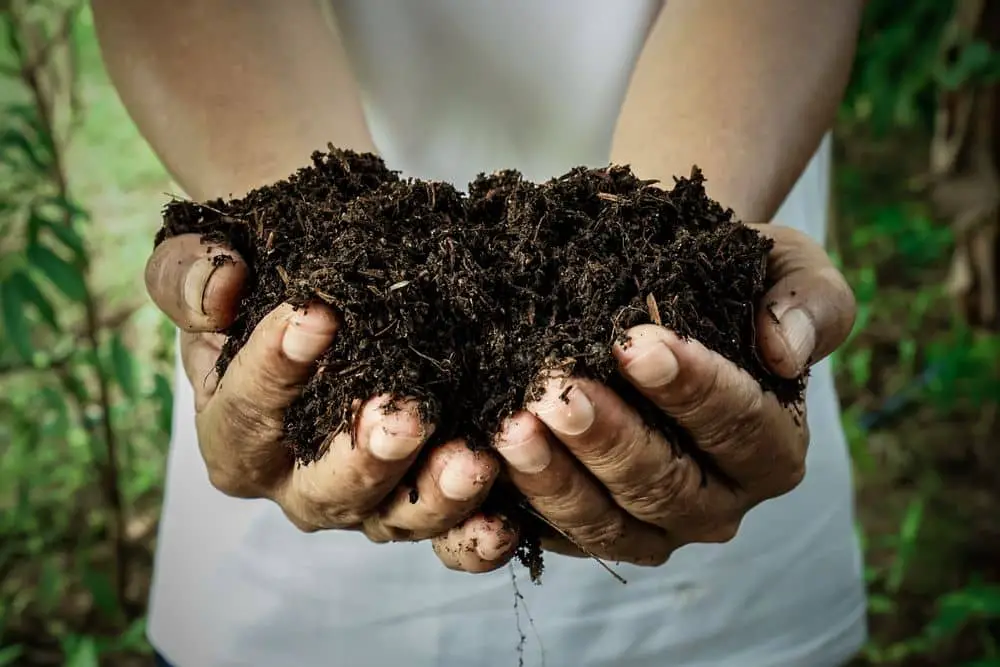Mushroom compost has a wide range of applications and is quite adaptable. When used to give moisture to gardens, lawns, and flower beds prior to planting, it is quite effective. However, not all plants respond positively to the nutrients found in mushroom compost.
The 11 plants that don’t like mushroom compost are: Azalea, Berries i.e., Blueberries, Strawberries, other types of Berries, Camellia, Salvia, Geranium, Rhododendron, Juniper, Lupine, Japanese Maple (Pinus edulis), Heather and Gardenia.
11 Plants That Don’t Like Mushroom Compost

Since ericaceous plants grow best in moist soil, mushroom compost is not a suitable choice for them. These are plants that thrive on soils that are acidic or deficient in nutrients.
is not a suitable choice for them. These are plants that thrive on soils that are acidic or deficient in nutrients.
For these plants, you will want to use acidic compost with a somewhat greater nitrogen concentration than you would normally use.
Mushroom compost can be used to fertilize plants that have a slightly greater alkaline content than normal.
The following are some examples of plants that do not tolerate mushroom compost:
1. The AzaleaThe azalea, which dislikes lime, favors ericaceous compost. If you’re growing an azalea, look for soil that has a high loam content and has just small amounts of peat, as this is specifically designed for acid-loving plants.
Better nutrients will be provided to the azalea by loam-based compost, which will also increase the soil’s water retention.
2. Berries such as Blueberries, Strawberries, and Other Types of Berries
In contrast to neutral soil, which is commonly found in gardens, most berries require acidic soil.
For the best results, cultivate them in pots filled with ericaceous (acidic) compost or in rich soil rich in organic matter to maximize their potential. The pH of the soil should be between 4.0 and 5.3 for blueberries, and between 5.5 and 6.5 for strawberries, depending on the variety.
3. Camellia
Camellias require acidic soil with a pH of 5.5 – 6.5 to thrive. By adding handmade leaf mold and decomposed pine needles to neutral soil, you may raise the acidity of the soil significantly.
Alternative methods of improving soil pH levels include mulching with ericaceous compost or bark chippings after the plants have been planted.
4. Salvia
Many salvia types thrive in regular garden compost combinations, and they are easy to grow. The kind of salvia, on the other hand, determines whether they favor wet or practically dry soil conditions, depending on the variety.
The optimal pH range for soil is between 5.5 and 6.5. Add aluminum sulfate, soil sulfur, or chelated iron to the soil to raise the acidity of the soil.
Alternatively, you may amend the soil with organic compost before you begin planting.
5. Geranium
Geraniums thrive in a well-draining compost that is abundant in organic matter and nutritional content. These plants thrive in potting soils that range from neutral to alkaline in pH.
To stimulate flowering, use a slow-release fertilizer comprising bone meal and rock phosphate (which may be found here at an affordable price).
This nutrient-loving plant, on the other hand, benefits greatly from vermicompost, which contains worms and vegetable waste and gives excellent slow-release nutrients.
6. Rhododendron
Rhododendrons, like the azalea, require acidic soil to flourish. If you want the greatest results, use ericaceous or peat-based compost. To enrich the soil, you may also use peat, organic green waste, and a general fertilizer.
Plants that grow well in peat soil with a pH range of 4.5 to 6 are the most desirable. Ammonium sulfate should be added to the soil before planting to raise the acidity of the soil.
7. Juniper
It is recommended that the juniper tree be planted in acidic soil with a pH range of 5 to 7.0; nevertheless, it is forgiving when planted in poor soil and will gladly flourish.
Juniper benefits from the addition of homemade or commercial compost to the soil because it gives the plant well-draining, nutrient-rich soil.
The best soil mix for juniper is composed of equal parts garden soil, organic compost, and a few tiny stones to aid in drainage and air circulation.
8. Lupine
A neutral to slightly acidic soil is ideal for lupine growth; but it may also thrive in very acidic soils if care is used.
The pH levels should be between 5.5 and 7.0, and the soil should be rich in organic matter and well-draining to get the best results.
Because excessive fertilization may result in excessive leaf growth and reduced bloom development, these plants do not require a lot of fertilization.
The use of an acidifying fertilizer can assist in lowering the pH of an alkaline environment.
9. Japanese Maple (Pinus edulis)
This little, sturdy tree thrives in soils that are slightly acidic in pH. It thrives on soils that are humus-rich and well-draining in nature.
It is possible to enhance the soil by incorporating organic matter such as well-rotted garden compost or specialist soil improvers, which are available at most gardening supply stores.
Acidic soil is preferable for them since they abhor alkaline soil and generate stunning leaf hues when grown in acidic soil.
10. Heather
The heather shrub prefers growth conditions that are neutral to acidic, as well as lots of sunlight.
Soil pH levels should be 6.5 or below, and organic matter such as composted bracken, pine needles, or well-rotted leaf mold should be added to improve soil fertility.
Heather growth is encouraged using acidic (ericaceous) compost and a slow-release fertilizer.
11. Gardenia
The gardenia thrives on soils that are neutral to acidic in pH, with a pH range between 6.0 and 7.0. House plant compost should be mixed with acidic soil in an equal proportion. Perlite or pumice should be added to improve drainage.
As the plant matures, mulching with pine straw or chopped wood will preserve moisture, discourage weed development, and supply beneficial nutrients to the plant.
Some Plants Aren’t Fond of Mushroom Compost
Some plants are not fond of mushroom compost for a variety of reasons. Due to the alkalinity of mushroom compost, the ericaceous plant family does not do well in this environment.
Ericaceous plants require a high level of acidity, which mushroom compost cannot provide. Even though it is suitable for use with shrubs, trees, perennials, and vines, it is not suitable for use with all types of plants.
compost cannot provide. Even though it is suitable for use with shrubs, trees, perennials, and vines, it is not suitable for use with all types of plants.
What is Mushroom Compost?
The term “spent mushroom compost” refers to mushroom compost that has been produced from the waste products of mushroom growing operations.
that has been produced from the waste products of mushroom growing operations.
It is mostly used as a mulch and soil conditioner to improve the appearance and productivity of decorative and food gardens.
As a result of its alkalinity, mushroom compost should not be used for acid-loving plants (ericaceous plants).
Mushroom compost is used by most gardeners to enhance the moisture content of their soil as well as to break down the clay. However, what most of them are unaware of is that there are several distinct varieties of mushroom compost.
The mushroom substrate, which is commonly a mixture of chicken or horse dung, gypsum, or wheat straw, is the most readily accessible commercially available variety.
In the manufacturing of substrates on a large scale, enormous bales of wheat straws are soaked in water and then chopped into pieces with the use of a chipper to create the desired size.
This is followed by a process of progressively incorporating the straw into the gypsum and manure. Immediately after the materials are composted, they are disinfected to increase their quality before being placed in the planting trays.
Another form is discarded mushroom compost, which is obtained from mushroom farms and may be used as a fertilizer. They are frequently offered as turf and lawn conditioners, where they are intended to improve the soil quality of turf and lawns.
compost, which is obtained from mushroom farms and may be used as a fertilizer. They are frequently offered as turf and lawn conditioners, where they are intended to improve the soil quality of turf and lawns.
They are also effective in raised bed mediums and planting mix, where they aid in the retention of moisture and help to enhance soil drainage.
The Best Way to Utilize Mushroom Compost
Mushroom compost may be used in a variety of situations. For starters, you can easily include it into any soil to increase the quality of the soil prior to the start of the growing season.
Most of the time, they are most appropriate for use in vegetable gardens, although they are equally effective in most alkaline soils. Prior to laying your lawn grass, it is advisable to work the mushroom compost into the soil and allow it to settle.
To achieve the greatest results, you should spread up to 3 inches of mushroom compost on top of your annual or perennial bed and dig to a depth of 6 inches.
Don’t forget to water your grass on a regular basis and keep an eye out for weeds as well.
Once you have applied mushroom compost to your grass, you will not need to apply any further fertilizer or herbicides for the remainder of the growing season.
It is advisable to put your mushroom compost near the stems of your plant in order to avoid your plant root from burning out. This will allow for quick nutrient uptake by your plant.
When you use compost in your garden, you will almost certainly have to deal with weeds, and you should not be concerned if you find any on top of your mushroom compost pile.
You won’t have to worry about weeds as much if the containers are thoroughly sanitized before storing.
Final Thoughts About Plants That Don’t Like Mushroom Compost
Adding mushroom compost to the soil is a wonderful approach to supplementing the nutrients available to plants in the soil.
compost to the soil is a wonderful approach to supplementing the nutrients available to plants in the soil.
It’s ideal for use in the vegetable garden, as well as for growing fruits and some types of flowers in containers.
But not every plant appreciates the alkalinity that mushroom compost brings to the soil, so it’s important to double-check before including it into your plants’ diet!

